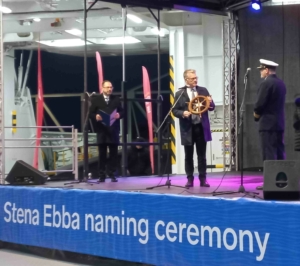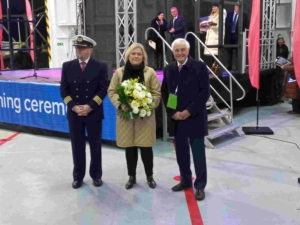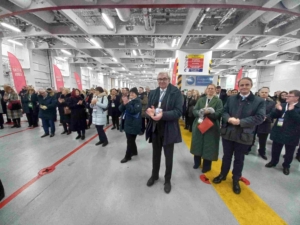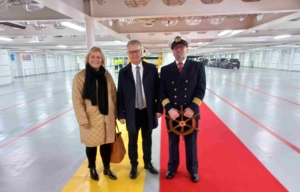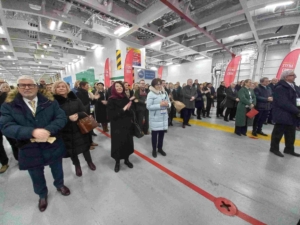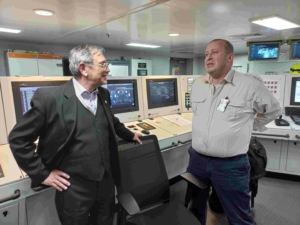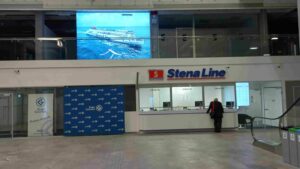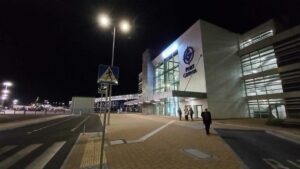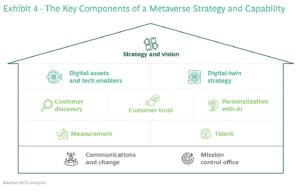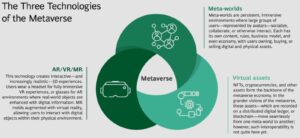By: Magdy Sadek
The first international conference “eGlobExpo” on e-Commerce, e.Logistics, entrepreneurship, and investment will be held in the new administrative capital of Egypt under the slogan of the digital economy and investing in logistics
Provided that the second edition of the conference and its activities will be in the Kingdom of Saudi Arabia, due to the great economic renaissance it bears, the opening of investment prospects in it, and the vision. About the conference halls, the meeting was with Tareq Jarour, Chairman of the Board of Directors of Trio LLC, the organizing company
Can you tell us more about the activities of your next conference in the administrative capital of Egypt next May?!
The conference will serve as a table for presenting experiences and ideas for projects that have not been realized on the ground and need more experience, encouragement, and financing, as well as emerging, small, and medium projects that seek development without deviating from their true goal for which they were established and correcting their paths
The conference is a unique experience as it will bring together all e-brands from around the world to learn about the latest eBiz-focused tactics and strategies, integrate with each other, and find partners with solutions to help them take their business to the next level with successful digital transformation.
What is the idea behind the slogan “Invest in Logistics”?!
We emphasize the importance of investing in the logistics sector by the private sector, especially since it is managed globally through this sector. As changes are instantaneous in this sector, whether in technologies or the prices of these services, which requires flexibility in determining the profit margin on the one hand and on the other hand the acquisition or merger with other entities in this sector, which is a key factor for building large economic entities facing challenges and market fluctuations.
And as I said, the private sector has the flexibility to conclude such deals on behalf of the government sector, which is governed by many local or international factors such as responsibility, commitment, bureaucracy, and bearing the burdens of conflicts or market fluctuations. Therefore, we find today, whether in Egypt or Saudi Arabia, interest in investment and the private sector, as well as emerging companies and small and medium enterprises that represent the mainstay of the national economy.
We affirm that the forum will be the first technological and logistical conference that presents innovative technological solutions in the field of logistics, highlighting mechanization and digitization, and reducing the cost of commercial and industrial solutions and logistics industries, so that there is a digital infrastructure for smart manufacturing so that it is in line with the serious challenges with the fourth industrial revolution in terms of artificial intelligence, automation, the Internet of things and the block Chain and others
Why did you choose to launch the first edition in Egypt? And why was your concern for the Saudi Kingdom to be the second stop for that event?!
Egypt and Saudi Arabia are two main stations in the world of trade and business locally, regionally, and globally, because of the logistical and ports infrastructure that both countries enjoy also a geo-strategic location is an important point for the Arab trade movement together.
The conference is a global forum on Egyptian soil, which includes all international companies specialized in the field of digital transformation, as the conference represents a valuable in addition to the Egyptian economy and contributes to the integration of emerging companies.
The forum represents an opportunity to present investment opportunities in Egypt and Saudi Arabia in a field that is the backbone of the trade, which is logistics and sea, dry, and land ports, and put it up for dialogue to support the idea of the logistics center, which is the strategy of the two countries, Egypt, and Saudi Arabia 2030, to become the largest logistics center in the region.
What will make the conference unique considering the global challenges in the logistics industry? What are the most important topics and axes that will be raised through its activities?!
The conference agenda includes a variety of sessions that allow participants to discuss new industry trends, listen to expert opinions on key issues, and learn about new products and consumer needs, and study market changes in the coming period and its ongoing challenges.
The program also includes discussion sessions related to all fields of industry, where the conference will hold seminars, workshops, and round tables on many financial, economic, and commercial issues in Egypt and other countries of the world, especially since the world, including Egypt and the Kingdom of Saudi Arabia, are interested in e. commerce, which now represents a large percentage from the global trade movement and the interest of the private sector and the increasing growth in e-commerce companies, which are witnessing a significant increase, whether in Egypt or Saudi Arabia, as it reaches ten times every year, which makes Egypt one of the largest dynamic markets in the world. As well as the Kingdom of Saudi Arabia
Do the activities of the conference include many other topics such as opportunities for emerging companies to meet with financing institutions?
The Conference eGlobExpo Presents the future of digital transformation in the world and learns about the latest Technologies and insights from leading brands and service providers to help companies build a successful digital transformation strategy.
Also, the event includes thousands of professionals and experts from all fields and solution providers around the world, which provides an opportunity for entrepreneurs and startup owners to communicate with them and learn from their previous experiences so that their businesses can advance globally under the shadow of global competitions, and supporting them, whether by direct financing or financing through the acquisition of stakes in these companies, especially since digital transformation is the future of all businesses and industries.
Digital infrastructure is one of the most important themes of the conference and the transfer of modern technology, whether for companies that will start or start-ups. To what extent will this be announced or implemented through the activities of the conference?
The conference represents an opportunity for partnership, merger, exchange of supplies and digital data in the field of e-commerce, logistics technology, digital dealing, and billing to other electronic transactions, which means the transfer of these modern technologies to the small and medium companies in the Egyptian market
Funding is one of the most important problems for startups. To what extent do you have solutions to it?
Funding has many faces, direct financing, or financing through the acquisition of shares in these companies. This is an essential aspect. Large and international institutions have expressed their interest and willingness to take practical steps in this regard.
We are interested in e.commerce, one of the most important axes and objectives of the conference. To what extent did this interest come in this file, which has become the focal point of the global trade movement?
Indeed, e.commerce represents one of the most important components of the global trade movement in light of our entry into the world of digitization, which has become part of the “life” movement now, and it is a growing trade in the world, as it represents 2 billion online marketers in the world. only in the Kingdom of Saudi Arabia, more than 80 billion Saudi riyals in 2021 Only an increase of 14% from 2020, and in the latest report of UNCTAD, it is expected that global trade will reach a record level of about 32 trillion US dollars for the year 2022, as it is the “future” of the global trade movement, which is witnessing great growth in the future.
Why did you become interested in the land transport and multimodal transport sector?! Didn’t this sector, whether in Egypt or the Saudi Kingdom, receive the required attention?!
The land and multimodal transport sector are a real “lung” to serve the logistics sector. In Egypt, the Egyptian government has taken care of establishing the infrastructure for this vital sector and linking it, whether to seaports or dry ports, as a logistical extension that complements the supply chain.
In Saudi Arabia, according to Vision 2030, the interest in these sectors came as a strategic importance for the trade movement, as the total lengths of future railways were increased, and the implementation of the “land bridge” project is one of the most important components of the strategy.
Connecting the Kingdom’s ports on the coasts of the Arabian Gulf and the Red Sea, with modern logistical centers, centers for economic activities, industrial cities, and mining activities, which will contribute to promoting sustainable development, creating a safe and highly efficient link network and relieving pressure on land roads.
It will also create an efficient supply and transport system within the Kingdom. Its importance and efficiency will increase by linking it, in the future, to the Gulf network.

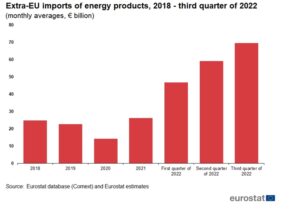
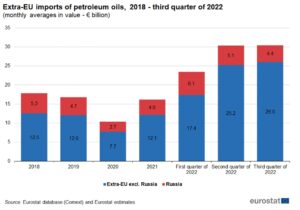
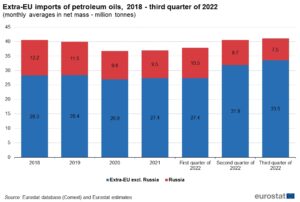
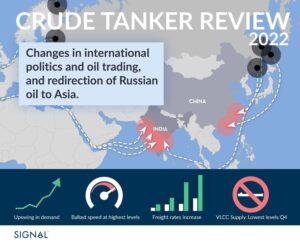
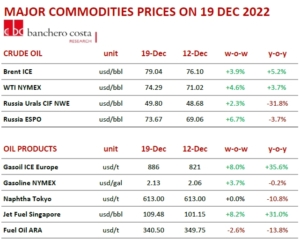
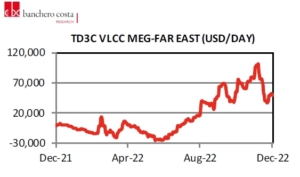

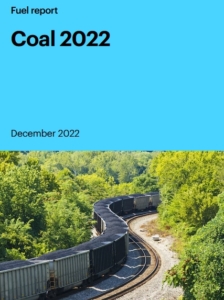
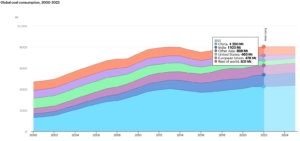
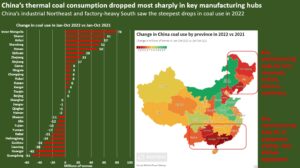
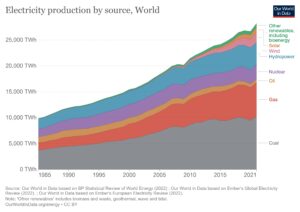
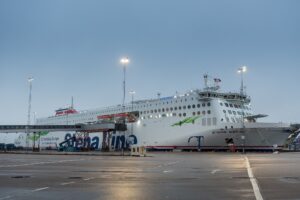
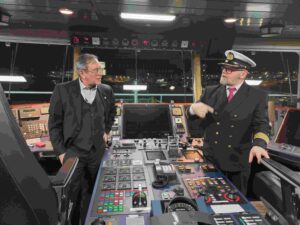
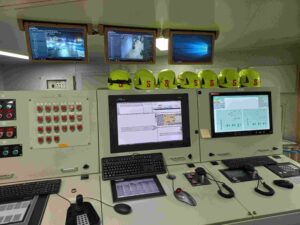
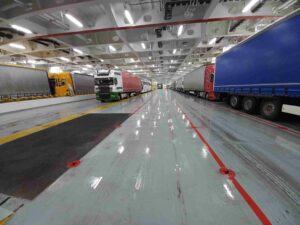
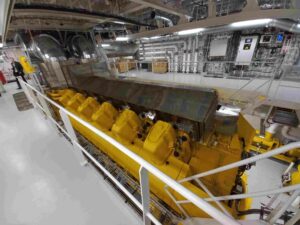
 The new ferry was named STENA EBBA
The new ferry was named STENA EBBA 